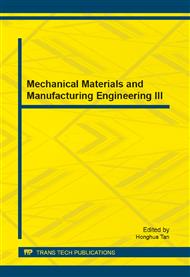p.310
p.314
p.320
p.325
p.330
p.337
p.344
p.350
p.354
Transient Heat Transfer Analysis of a Micro Heat Exchanger
Abstract:
The research object is a micro heat exchanger (MHT) applied in chip cooling, a three dimensional simulation model is developed to analyze the transient heat transfer of the exchanger according to both exponential and periodic heat fluxes. Based on the computational results of the profiles of temperature and thermal stress, a comparison of performance of heat exchangers made of copper and silicon nitride compound is carried out. The results indicate that the capability of a copper heat exchanger is better than that of a silicon nitride exchanger under low load working condition due to the excellent thermal conductivity of copper. However, with large load fluctuations, the advantage of structure strength of compound makes the exchanger attractive since it has lower thermal stress and could guarantee a long-term stability. The efforts of this paper are referable for further research and development of micro heat exchangers.
Info:
Periodical:
Pages:
330-334
Citation:
Online since:
November 2013
Authors:
Keywords:
Price:
Сopyright:
© 2014 Trans Tech Publications Ltd. All Rights Reserved
Share:
Citation:


